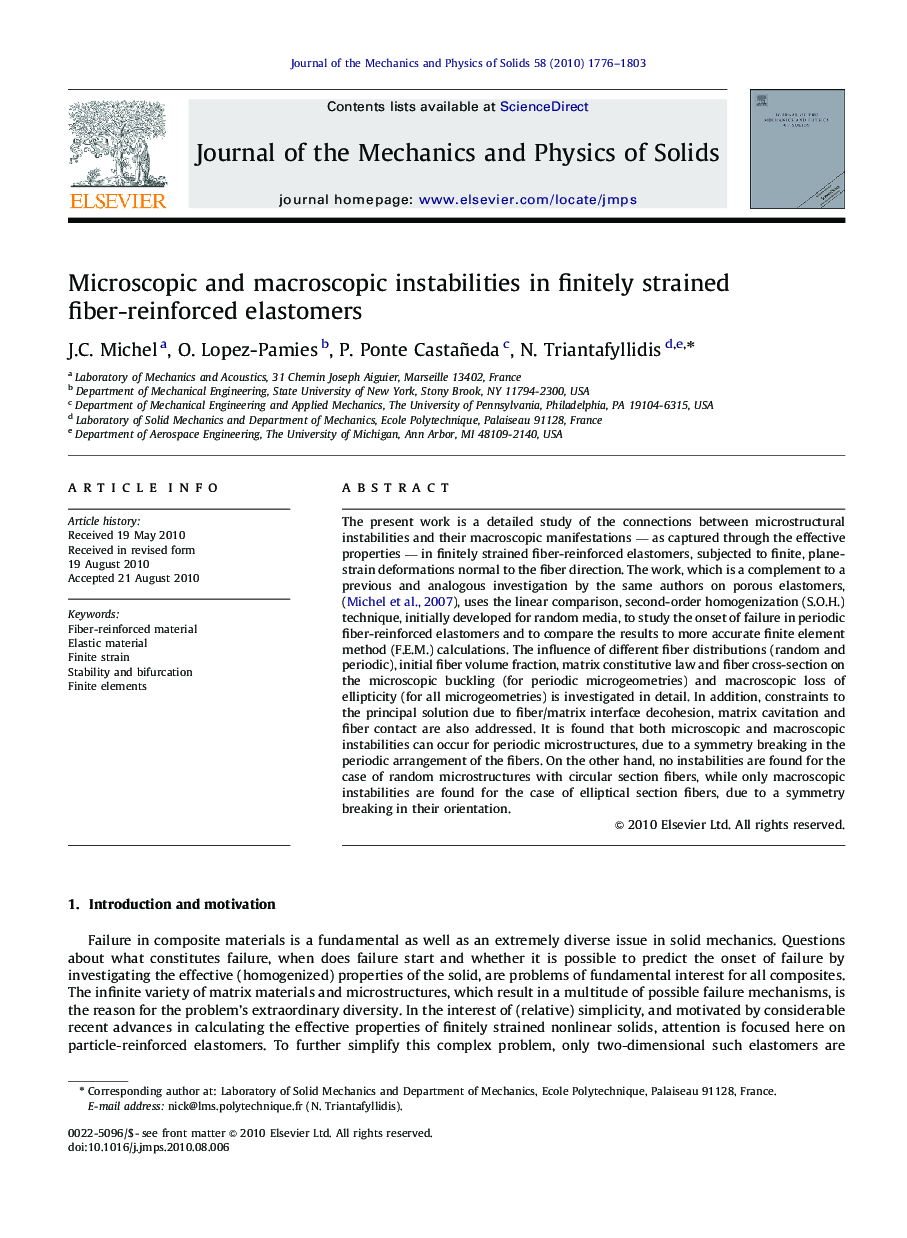| Article ID | Journal | Published Year | Pages | File Type |
|---|---|---|---|---|
| 799666 | Journal of the Mechanics and Physics of Solids | 2010 | 28 Pages |
The present work is a detailed study of the connections between microstructural instabilities and their macroscopic manifestations — as captured through the effective properties — in finitely strained fiber-reinforced elastomers, subjected to finite, plane-strain deformations normal to the fiber direction. The work, which is a complement to a previous and analogous investigation by the same authors on porous elastomers, (Michel et al., 2007), uses the linear comparison, second-order homogenization (S.O.H.) technique, initially developed for random media, to study the onset of failure in periodic fiber-reinforced elastomers and to compare the results to more accurate finite element method (F.E.M.) calculations. The influence of different fiber distributions (random and periodic), initial fiber volume fraction, matrix constitutive law and fiber cross-section on the microscopic buckling (for periodic microgeometries) and macroscopic loss of ellipticity (for all microgeometries) is investigated in detail. In addition, constraints to the principal solution due to fiber/matrix interface decohesion, matrix cavitation and fiber contact are also addressed. It is found that both microscopic and macroscopic instabilities can occur for periodic microstructures, due to a symmetry breaking in the periodic arrangement of the fibers. On the other hand, no instabilities are found for the case of random microstructures with circular section fibers, while only macroscopic instabilities are found for the case of elliptical section fibers, due to a symmetry breaking in their orientation.
